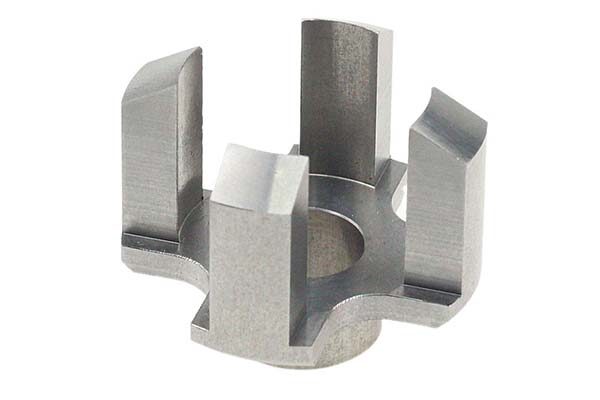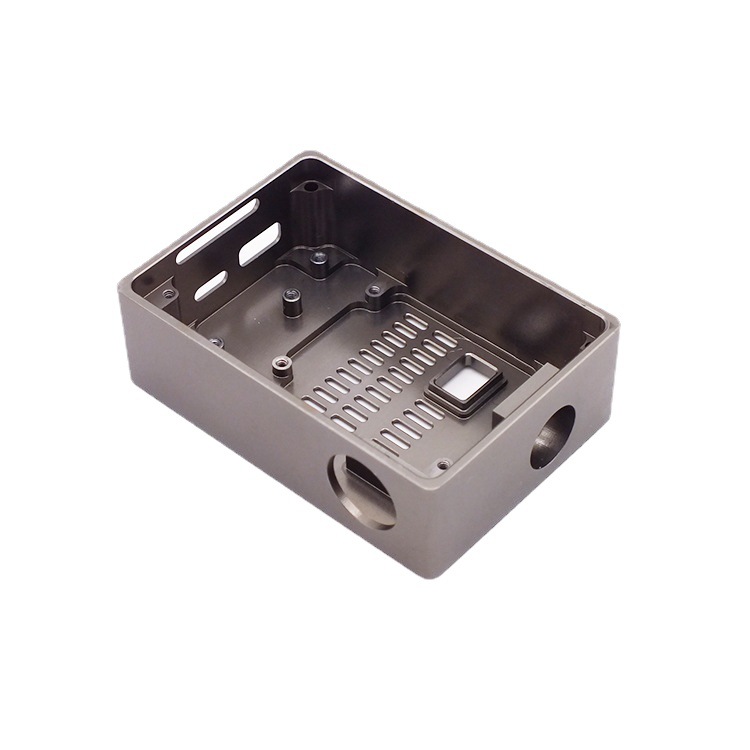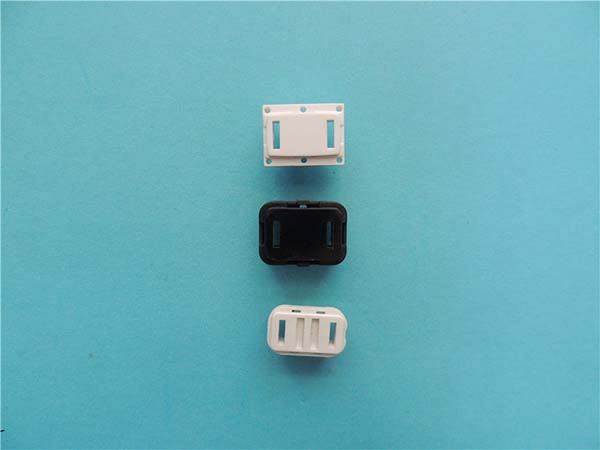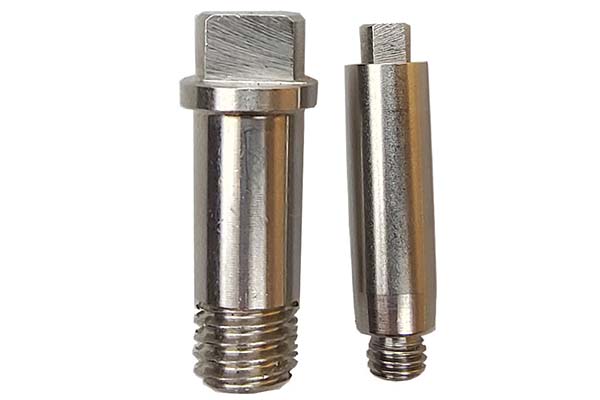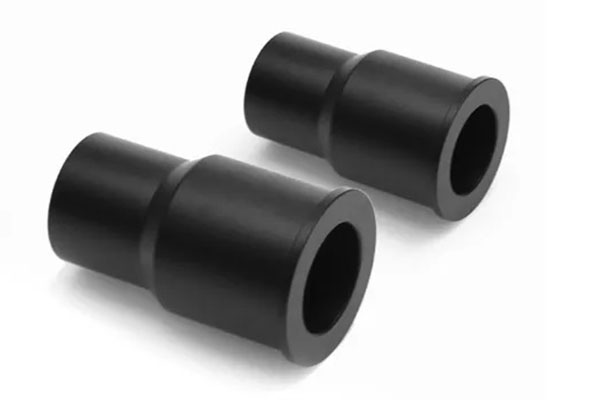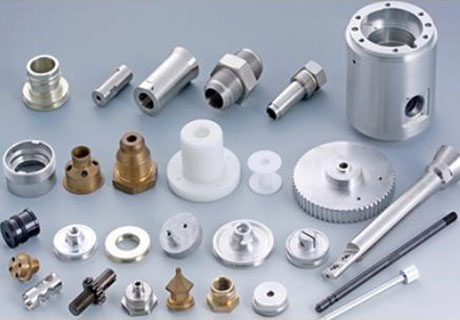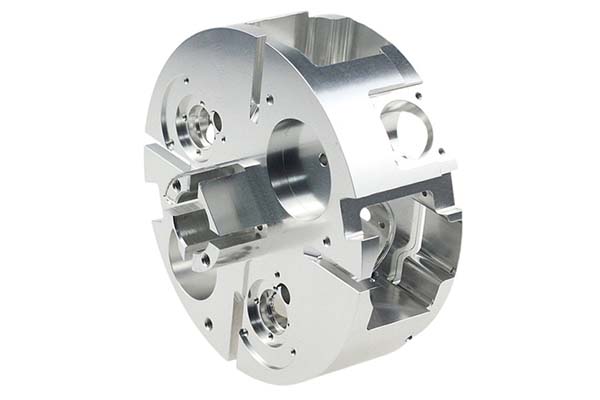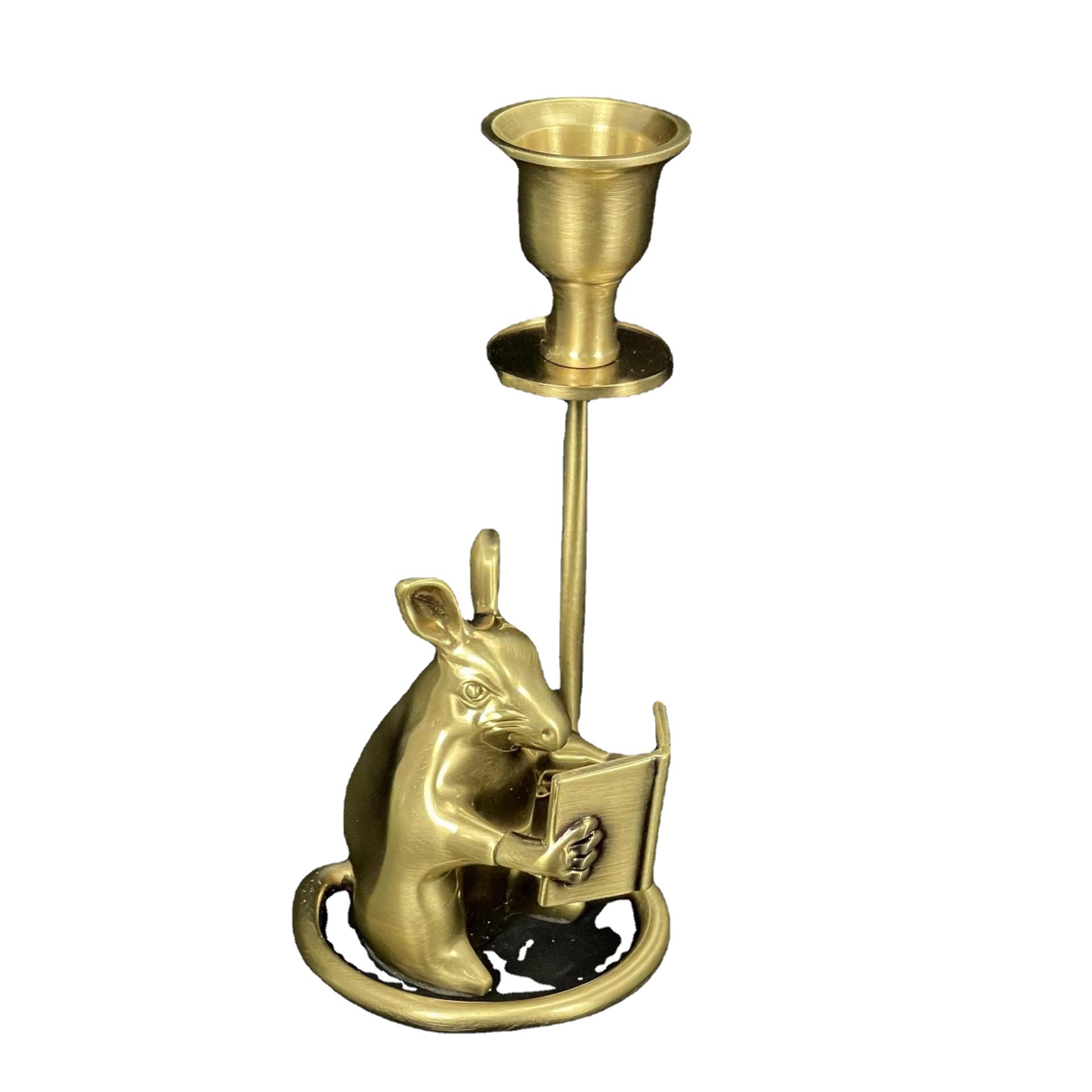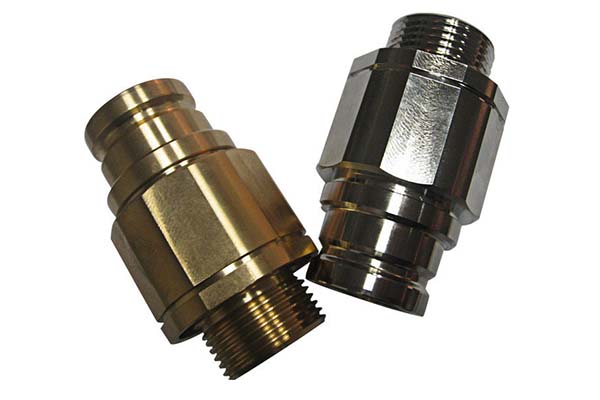In the world of precision manufacturing, CNC machining plays a pivotal role. When it comes to working with 12L14 steel, there are several aspects that manufacturers need to master to ensure high - quality output. Many users face challenges such as poor surface finish, short tool life, and difficulties in handling the material due to its unique characteristics. This article will delve into all the key areas related to CNC machining of 12L14 steel to help you overcome these issues.
1. Material Characteristics & Free - Machining Design
12L14 steel is a leaded free - machining steel. Its composition is carefully designed for easy machining. With a carbon (C) content of around 0.14%, it provides a good balance of strength and machinability. The steel also contains high sulfur (S: 0.26 - 0.35%) and lead (Pb: 0.15 - 0.35%) additives.
The sulfur forms manganese sulfide (MnS) inclusions. These inclusions interrupt the continuity of the metal matrix. During machining, they act as stress raisers, causing the chips to break more easily. This is a crucial factor in improving machinability. The lead, on the other hand, is present in the form of fine particles. When the temperature rises during machining, these lead particles melt and act as a lubricant between the tool and the workpiece, reducing friction.
The machinability index of 12L14 steel is relatively high compared to many other steels. This means that it can be processed more efficiently, with less power consumption and longer tool life in most cases. However, it's important to note that the high sulfur and lead content also bring some limitations. For example, the weldability of 12L14 steel is rather poor. The sulfur can cause hot cracking during welding, and the lead can volatilize, creating porosity in the weld.
In terms of mechanical properties, 12L14 steel has a tensile strength in the range of 380 - 460 MPa. This makes it suitable for applications where moderate strength is required. There are also lead - free alternative steels emerging in the market, such as some bismuth - added steels. These are being developed to meet environmental concerns, as lead is a toxic element. But they often have different machining characteristics and may not offer the same level of free - machining as 12L14 steel.
2. CNC Machining Parameters & Techniques
Cutting Speed, Feed Rate, and Depth of Cut
When machining 12L14 steel, choosing the right cutting speed is crucial. Generally, for high - speed turning of 12L14 steel, cutting speeds can range from 150 - 300 m/min. However, this can vary depending on the type of tool being used. Carbide inserts can often tolerate higher cutting speeds compared to high - speed steel (HSS) inserts.
The feed rate for free - machining steel like 12L14 typically ranges from 0.1 - 0.3 mm/rev. A proper feed rate ensures that the tool engages with the material effectively without causing excessive wear or chatter. The depth of cut should be optimized based on the workpiece size, shape, and the machine's capabilities. For rough machining, a deeper cut of up to 2 - 3 mm can be used, while for finishing operations, the depth of cut is usually reduced to 0.1 - 0.5 mm.
Carbide vs HSS Inserts
Carbide inserts are a popular choice for machining 12L14 steel. They offer higher hardness and wear resistance compared to HSS inserts. This allows for higher cutting speeds and longer tool life. Uncoated carbide inserts can be used effectively for general machining of 12L14 steel. However, for more demanding applications, coated carbide inserts may be preferred. Some carbide inserts have a polished rake face, which helps in chip flow and reduces the chance of built - up edge.
HSS inserts, on the other hand, are more flexible and can be used for more complex geometries where the cutting forces are more variable. But they have a lower cutting speed limit and a shorter tool life compared to carbide inserts.
Chip Breaking and Tool Life Maximization
Chip breaking is an important aspect of machining 12L14 steel. Due to its free - machining nature, the chips can sometimes be long and stringy, which can cause problems such as wrapping around the tool or interfering with the machining process. To promote chip breaking, the cutting parameters can be adjusted. For example, increasing the feed rate slightly can help in breaking the chips into smaller, more manageable pieces.
Tool life can be maximized by choosing the right combination of cutting parameters, tool material, and proper coolant use. Since 12L14 steel is a free - machining steel, it requires minimal coolant in some cases. However, when machining at high speeds or for long periods, a coolant can still be beneficial in reducing the temperature at the cutting zone, which in turn can extend the tool life.
3. Tooling & Coating Selection
Uncoated Carbide Inserts and Their Advantages
Uncoated carbide inserts are a common choice for machining 12L14 steel. They have a high hardness, which allows them to withstand the cutting forces well. Their simple structure also makes them relatively inexpensive compared to some coated inserts. As mentioned earlier, the polished rake face of some uncoated carbide inserts helps in smooth chip flow, reducing the chances of chip adhesion to the tool.
High - Positive Geometry Tools
High - positive geometry tools are designed to reduce the cutting forces. In the case of 12L14 steel, these tools can be very effective. They have a more aggressive cutting edge, which allows for easier penetration into the material. This not only improves the machining efficiency but also helps in reducing the wear on the tool. However, they need to be used with caution as they may be more prone to chipping if the cutting parameters are not set correctly.
PCD Tips for Finishing
For achieving a high - quality surface finish on 12L14 steel, polycrystalline diamond (PCD) tips can be used. PCD tips are extremely hard and have a very low coefficient of friction. This makes them ideal for finishing operations where a mirror - like surface finish is required. They can significantly improve the Ra surface finish value. However, PCD tips are expensive and are mainly used for high - end applications where the surface finish requirements are very strict.
Toolholder Runout Limits and Micro - Lubrication Systems
Toolholder runout can have a significant impact on the machining process. For machining 12L14 steel, the toolholder runout should be kept within tight limits, usually less than 0.01 mm. Excessive runout can cause uneven wear on the tool and lead to poor surface finish.
Micro - lubrication systems can be very useful when machining 12L14 steel. These systems deliver a very small amount of lubricant directly to the cutting zone. This helps in reducing friction and wear, similar to the role of the lead particles in the steel itself. It also helps in chip evacuation and can improve the overall machining performance.
4. Surface Finish & Post - Machining
Ra Surface Finish and Burnishing
The Ra surface finish of 12L14 steel after machining can vary depending on the machining parameters and tools used. With proper machining, a Ra value of around 0.8 - 1.6 μm can be achieved. However, for applications where a smoother surface is required, burnishing can be used. Burnishing is a process where a hard, smooth tool is used to plastically deform the surface of the workpiece, reducing the surface roughness. This can improve the Ra value to as low as 0.2 - 0.4 μm.
Deburring and Chatter Marks Prevention
Deburring is an essential post - machining operation for 12L14 steel parts. The free - machining nature of the steel can sometimes leave small burrs on the edges. These burrs need to be removed as they can affect the functionality and appearance of the part. There are various deburring methods available, such as manual deburring, abrasive flow deburring, and electrochemical deburring.
Chatter marks can also be a problem when machining 12L14 steel. These marks are caused by vibrations during the machining process. To prevent chatter marks, the machine's rigidity can be increased, the cutting parameters can be adjusted to reduce the cutting forces, and anti - vibration tools can be used.
Dimensional Accuracy and Corrosion Protection
12L14 steel can achieve good dimensional accuracy during machining if the process is well - controlled. The dimensional tolerance can be maintained within ±0.05 mm in most cases. After machining, corrosion protection is important, especially since the sulfur in the steel can make it more prone to corrosion in some environments. Coating the parts with a corrosion - resistant layer, such as zinc plating or applying a protective paint, can help in preventing corrosion.
5. Health, Safety & Environmental Handling
Lead Exposure Controls
Since 12L14 steel contains lead, proper lead exposure controls need to be in place. Operators should wear personal protective equipment (PPE) such as gloves, safety glasses, and respirators. The work area should be well - ventilated to prevent the accumulation of lead dust or fumes. According to OSHA lead standards, the permissible exposure limit for lead in the workplace is 50 μg/m³ over an 8 - hour time - weighted average.
Swarf Disposal and Recycling
The swarf (metal chips) generated during the machining of 12L14 steel needs to be disposed of properly. The lead - containing swarf should be collected separately and treated as hazardous waste. However, efforts are also being made to recycle 12L14 chips. Recycling can help in reducing the environmental impact and also recovering valuable materials. Some recycling processes involve separating the lead from the steel and re - using the steel for other applications.
Coolant Filtration for Lead Particles
If coolant is used during machining, it needs to be filtered to remove any lead particles. These particles can be harmful if they are released into the environment. Specialized coolant filtration systems can be used to ensure that the coolant is free from lead particles before it is discharged or reused.
6. Applications & Industry Case Studies
Precision Bushings, Hydraulic Fittings, and Electronic Connector Pins
12L14 steel is widely used in the production of precision bushings. Its good machinability allows for the creation of tight - tolerance bushings with smooth inner and outer surfaces. In the case of hydraulic fittings, the moderate strength and excellent machinability of 12L14 steel make it suitable for manufacturing fittings that can withstand high pressures.
For electronic connector pins, 12L14 steel can be easily machined into the required shapes. The ability to achieve a good surface finish is also important as it can affect the electrical conductivity and contact reliability of the pins.
Automotive Sensor Housings and Miniature Screws
Automotive sensor housings often require materials that can be machined precisely to fit the sensors. 12L14 steel meets this requirement, and its moderate strength can protect the sensors from external mechanical forces. Miniature screws made from 12L14 steel are also very common. The free - machining nature of the steel allows for high - volume production of these screws with consistent quality.
High - Volume Screw Machine Parts Case Study
In a high - volume screw machine parts production facility, 12L14 steel was used to manufacture small screws. By optimizing the CNC machining parameters, such as using a high - speed turning process with carbide inserts and proper chip - breaking techniques, the production rate was increased by 30% compared to using a different material. The surface finish of the screws was also excellent, meeting the strict quality requirements of the customers. The facility also implemented proper lead exposure controls to ensure the safety of the workers.
Yigu Technology, as a parts custom manufacturing Supplier, understands the nuances of CNC machining 12L14 steel. We have extensive experience in optimizing machining processes to achieve the best results. Our team of experts can help customers select the right tooling, set appropriate machining parameters, and ensure high - quality output while adhering to all safety and environmental regulations. We are committed to providing customized solutions for our clients, whether it's for producing high - precision components or large - volume orders.
FAQ
- Is 12L14 steel suitable for welding?
12L14 steel has poor weldability due to its high sulfur and lead content. The sulfur can cause hot cracking during welding, and the lead can volatilize, creating porosity in the weld. So, it is generally not recommended for applications that require welding.
- What is the best way to improve the surface finish of 12L14 steel?
Using proper machining parameters, such as the right cutting speed, feed rate, and depth of cut, can help. Additionally, tools like PCD tips for finishing operations and burnishing the surface after machining can significantly improve the surface finish.
- How can I handle the lead - containing swarf from machining 12L14 steel?
The lead - containing swarf should be collected separately and treated as hazardous waste. It is important to follow local environmental regulations for its disposal. Some recycling processes can also be used to recover valuable materials and reduce environmental impact.
